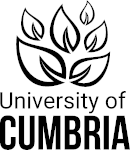
University of Cumbria academic contributes to a new Amazon rainforest study
Dr Joseph Hawes, Senior Lecturer in Ecology & Conservation in the University of Cumbria’s Institute of Science & Environment, has contributed specialist expertise to a new international study revealing that human disturbance is profoundly transforming the ecological functions and evolutionary history of the Amazon rainforest.
Pictured above: Dr Joseph Hawes, Senior Lecturer in Ecology & Conservation in the University of Cumbria’s Institute of Science & Environment
The research, published last week in Global Change Biology journal, demonstrates that disturbances such as selective logging, wildfires, and the clearing and regrowth of forests significantly alter the diversity and composition of Amazonian tree communities. With tropical rainforests holding most of the planet’s biodiversity, understanding these shifts is crucial to addressing the global biodiversity crisis.
The Amazon contains up to 16,000 tree species, with a single hectare often supporting more than 300 species – compared to just 32 native tree species in the UK. Yet tropical regions continue to experience rapid forest loss, and in the Amazon, areas affected annually by logging and fire now exceed those that are completely deforested. Consequently, human-modified and secondary forests now cover around 1.27 million km², or 23% of the remaining forest.
Pictured above: Fieldwork team measuring trees in the Brazilian Amazon. Credits: Adam Ronan/ Rede Amazônia Sustentável.
The study, carried out by an international research team from Brazil and the UK, involved sampling more than 55,000 trees across 215 plots in Eastern Amazonia. These plots spanned a spectrum of forest conditions, from undisturbed primary forest to selectively logged, burned, and regenerating secondary forests.
Researchers measured three key dimensions of diversity: species diversity, functional diversity (based on traits such as bark thickness, leaf area, wood density and seed traits) and phylogenetic diversity (reflecting the evolutionary relationships among species).
Pictured above: Fieldwork team measuring trees in the Brazilian Amazon. Credits: Adam Ronan/ Rede Amazônia Sustentável.
All forms of human disturbance were found to reduce every measure of tree diversity, reshaping both the composition and ecological roles of Amazonian forests.
Dr Hawes' work focused on the seed dispersal characteristics of Amazonian tree species. He compiled and analysed datasets on seed width, fruit type and dispersal mode, traits that influence how forests regenerate after being logged, burned or clear-felled. Seed dispersal traits play a vital role in determining which species recolonise disturbed areas and how forest composition changes over time.
Dr Hawes' said: “This study is a timely reminder that the value of tropical forests goes far beyond just carbon. Disturbances from fire, logging or clear-felling also profoundly affect biodiversity, not only reducing the number of different tree species but also altering the species composition of disturbed forests. As a result, this changes the functional traits displayed in these forests – characteristics such as wood density, leaf area or seed size – that describe what tree species do in an ecosystem and how they contribute to forest resilience.”
Pictured above: Logged tree within a primary forest in the Brazilian Amazon. Credits: Leonardo de Sousa Miranda.
The findings are presented in the paper “Multi-faceted assessment of Amazonian tree diversity reveals pervasive impacts of human modifications”, which forms part of the long-term PELD-RAS research programme funded by Brazil’s CNPq, UKRI and DEFRA’s Global Centre on Biodiversity for Climate, and the BNP Paribas Foundation’s Climate and Biodiversity Initiative.
To read the full study, head to: Global Change Biology journal




